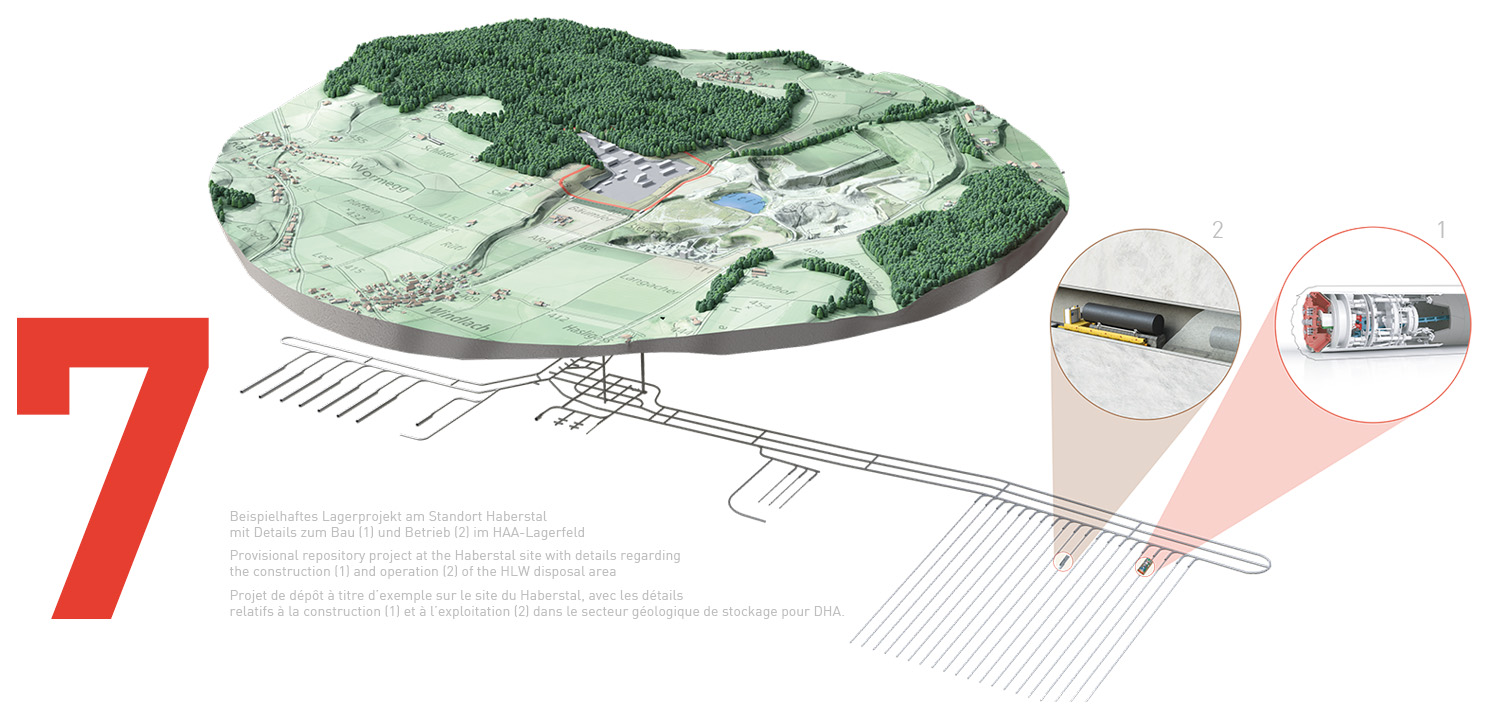A provisional repository project was developed in line with regulatory requirements as the basis for the site selection and the general licence application. This project can be implemented by applying established structural, technical and organisational precautionary measures in such a way that no unauthorised radiological hazard will arise for humans and the environment during operation and after closure.
BASIC FEATURES OF THE FACILITY
The repository site was selected solely on the basis of geological criteria. For this reason, the repository layout developed for earlier project phases was largely retained. The only site-specific supplementary decision concerned the access to the repository.
The robust database, which was further expanded by geological investigations, reduced uncertainties in the geological conditions and plausibly demonstrated the feasibility of constructing the underground facilities. Even if conditions are found to deviate from the expected rock behaviour, it would be possible to reduce the engineering risks to an acceptable level by applying known and proven construction procedures and measures.
There is still great potential for improving the project from an operational and structural perspective, primarily through the further development of the repository layout. The general licence specifies only the basic features of the project (Article 14, KEG). These are in turn outlined in a provisional repository project designed to meet the basic layout requirements (Articles 11 and 64 to 69, KEV). The spatial requirements for the disposal areas are determined based on the repository concept and the waste volume.
PROJECT DEVELOPMENT
For the further licensing procedure, the project is being developed as specified in the general licence application. The aim is to optimise planning, construction and operation while taking technological and scientific progress into account. Special attention will be paid to the economical use of resources. Specifying the dimensions of the project perimeter
to correspond with those proposed by Nagra, or at least not below them, will provide sufficient flexibility for realising the foreseen optimisation measures. Safety, which is primarily ensured by the geological properties of the site, will always remain the top priority. The federal government set up the Decommissioning and Waste Disposal Funds (STENFO) to secure the financing of deep geological disposal. The general licence application provides information on the costs of a combined repository (Art. 62, KEV).
The information is based on the results of the 2021 Cost Study, which determined the costs of two individual repositories in a base project. In the next Cost Study due in 2026, the combined repository in NL will be used as the base project in accordance with the STENFO specifications. The project will be designed to be more compact and will differ from the project for the general licence application, for example with regard to the placement of the disposal areas and the line of the disposal area accesses. The results of the 2026
Cost Study will be available before the completion of the technical review of the general licence applications (2027). The Federal Council can decide on the general licences by 2029, after conclusion of the project financing review at the end of 2028 and after the decision of the Federal Department of the Environment, Transport, Energy and Communications (DETEC) on the 2026 Cost Study. The Waste Management Programme will be updated together with the Cost Study and will provide information on the current status of the project and its further development.
The present focus of optimisation activities is on the emplacement concept – for example with regard to the loading and size of the disposal containers and the dimensioning of the emplacement drifts and caverns. The post-closure safety case for the construction licensing procedure will be based on the improved repository project. In contrast to the repository layout, no new geological findings are expected in terms of post-closure safety. These site characteristics have already been reviewed and substantiated as part of the Sectoral Plan process.

